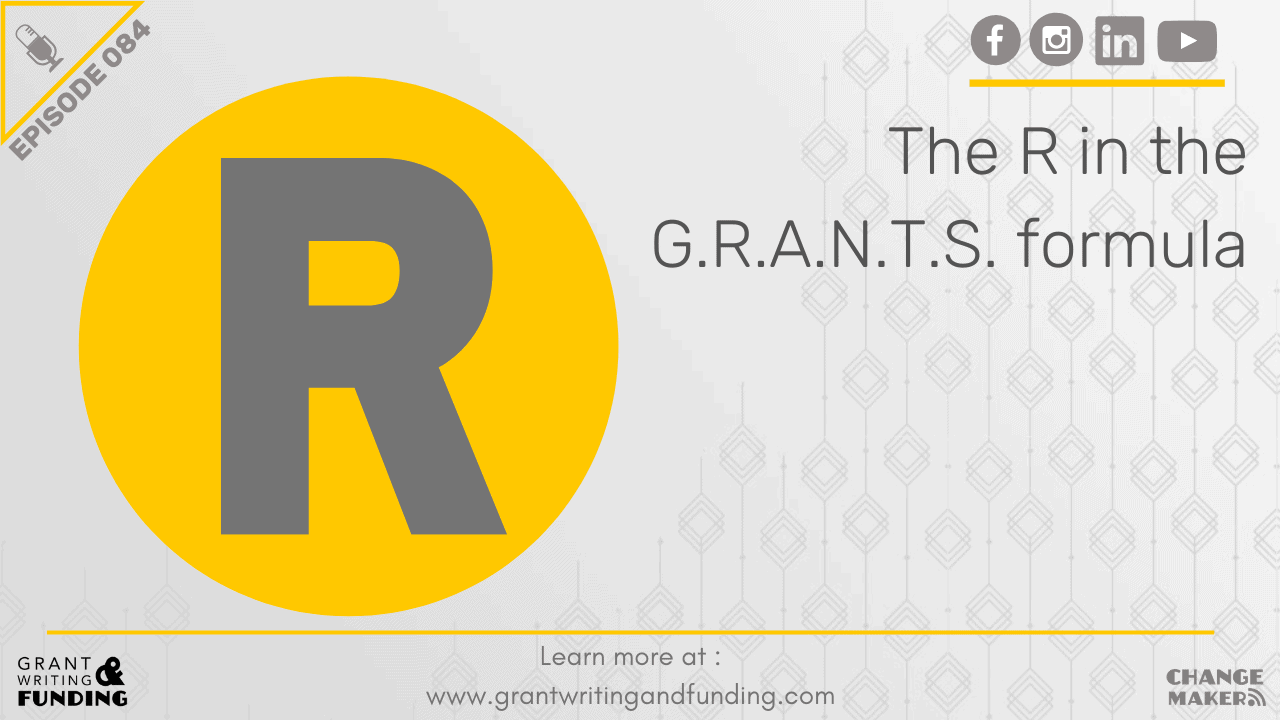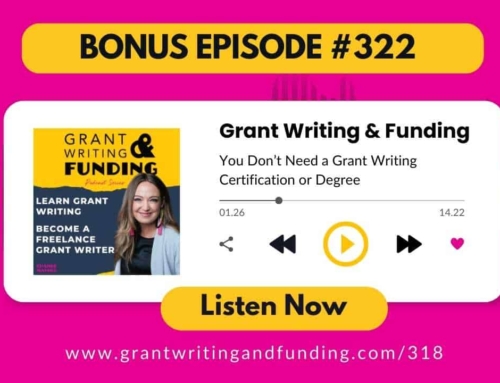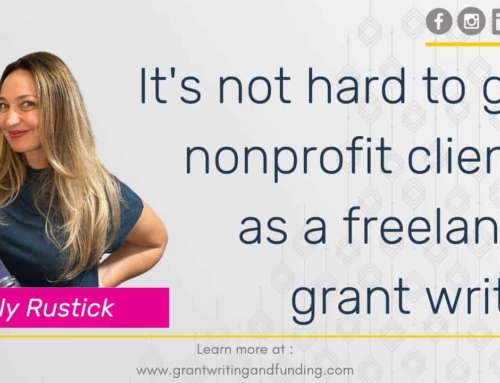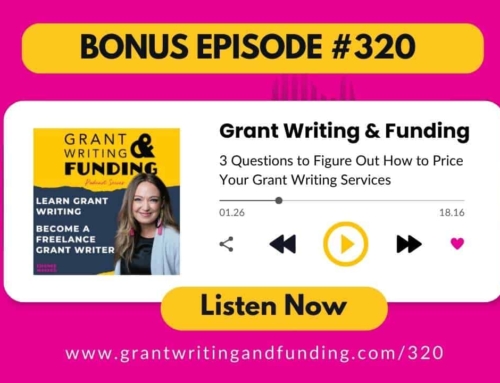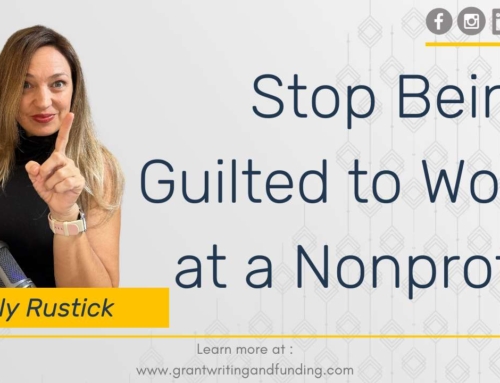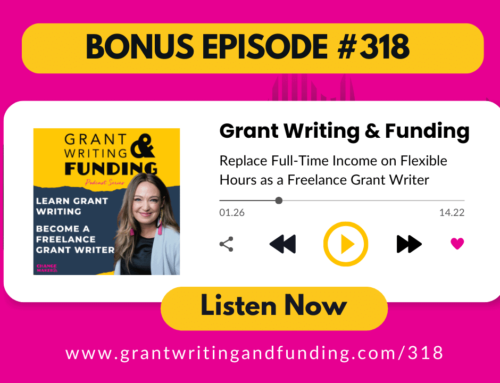The R in the G.R.A.N.T.S. Formula
Mastering Grant Research: The “R” in the GRANTS Formula
Last week on the blog, we covered the G. in the G.R.A.N.T.S. Formula, which is to Get the FOA or RFP and use it as a template for your grant.
There are some great gems in the post, so you’ll definitely want to take a look if you haven’t already.
Today, we’re diving into the “R” in the GRANTS Formula, which stands for “Research Needs: Problem Statements.”
Conducting thorough research and providing credible data and statistics are crucial when applying for grants. It’s not enough to simply state that there is a need in the community; you must back it up with evidence.
Mastering Grant Research: The Importance of Thorough Problem Statement Analysis
Last week on the blog, we covered the G. in the G.R.A.N.T.S. Formula, which is to Get the FOA or RFP and use it as a template for your grant.
There are some great gems in the post, so you’ll definitely want to take a look if you haven’t already.
Today, we’re diving into the “R” in the GRANTS Formula, which stands for “Research Needs: Problem Statements.”
Conducting thorough research and providing credible data and statistics are crucial when applying for grants. It’s not enough to simply state that there is a need in the community; you must back it up with evidence.
Research Needs: Problem Statements
Providing research, statistics, surveys, and other types of data in supporting your needs is vital for grants.
I even include statistics in letters of support as this demonstrates a great level of need for both the person you ask to sign the letter and to the funding agency. Always demonstrate why your project is needed with data and research! If you do not have a strong ‘why’ then funding sources will not understand how their dollars will benefit anyone or anything.
However, be careful that you don’t throw verbiage into your grants or letters of support that your project is needed because there are a lot of problems in the community, and then just keep repeating that same wording throughout. That would be akin to someone trying to talk to another person that doesn’t speak their language, and they just keep speaking slower and louder thinking the other person will magically understand their point.
Instead of just copying and pasting that your project is needed, you actually need to show specifically why. This is done through research. You must get statistics and data, and also back it up with sources to demonstrate the need.
This will also help you score higher on your grant proposals!
Research demonstrates that you did not pull your statements out of the sky. It also shows that there is a credible problem that your project will solve.
Let’s look at some examples of problem statements.
Example #1: There is a high rate of teenage pregnancy in New Mexico.
Do you think that is a sufficient problem statement? Well, although it is a good start, it is not a measurable statement. What you think is a ‘high rate’ may not be considered a ‘high rate’ to me.
Also, how do you know that it is a high rate? What are you comparing it to?
Example #2: The teenage pregnancy rate in New Mexico is the highest in the nation, with 62 out of 1,000 teenage youths pregnant compared to the U.S. average of 18.8 (CDC, 2017).
Do you see the difference? I provided statistics, used a comparison, and cited the source so you know where I got the statistics.
For writing the Needs (or Problem) area of your grant you can utilize the following:
- Statistics (ex. newspapers, peer-reviewed articles, books, or other credible sources)
- Reports (ex. Department of Labor Bureau Report, Census Report, etc.)
- Surveys (ex. Needs & Strengths Assessments, Facebook poll, online survey, etc.)
- Testimonials (ex. Letters from your beneficiaries, focus group statements, etc.)
- Interviews (ex. Online interviews, in-person interviews, over-the-phone, etc.)
As you research, make sure that you bookmark the pages (if you are doing online research) and that you track all of your resources (refer to episode 80 for a downloadable research tracker excel sheet). You want to ensure that you are putting the resources as footnotes, or, if allowed, included in a bibliography.
Yes, we are going back to freshman English class and composition lessons.
You need to show WHERE you got your information.
This will set you apart from the others who may have referred to a study or two but never included their bibliography or showed where they got their information.
So, what do you include? Well, at the very least, include the author’s last name, the title of the publication (name of the article, paper, or study), page number (if applicable), website URL (if applicable), and the publishing date.
As you go through your research, make sure that you are also including research that really shows what the need is in relation to your project. So, if you are setting up transitional housing for pregnant teenagers or teenage moms or other supportive services for these teenagers then your research should be about the needs of pregnant teenagers or teenage mothers and should help drive your specific project.
I dug around a bit and found this research pertaining to pregnant teenagers in New Mexico:
Poverty is one of the most important contributing factors to teenage pregnancy. In 2016, New Mexico had the 3rd highest child poverty rate among all states (25.9% of children age 0-17 in poverty) (U.S. Census Bureau, 2017).
“Daughters born to women in their 20s are three times less likely to become teen moms themselves compared with daughters of teen moms – so it is a change that ripples across generations” (Power to Decide, 2018, formerly the National Campaign to Prevent Teen and Unplanned Pregnancy, https://powertodecide.org/what-we-do/information/why-it-matters).
Poverty and income inequality correlate closely with teen pregnancy, and as one of the poorest states in the country (in 2014 New Mexico had both the highest poverty and the highest child poverty rate in the nation), New Mexicans seem caught in a whirlwind cycle of unprepared young people becoming parents (Rich, 2012).
From looking at this research, it may behoove a youth-focused or women-focused nonprofit in New Mexico to develop a financial literacy project, workforce project, or skill project for the teenage moms who stay at their transitional housing.
You can see then how conducting your research is imperative for guiding the project that you will develop. Maybe you first had a project idea to only provide the housing for pregnant teenage moms, but after the research, you realized that they need to increase their skills and financial literacy so that they can eventually become self-sustaining and move out of the transitional housing so slots open up to other pregnant teenagers.
This is how your research will guide your projects and really demonstrate why your project is needed.
In summary,
- Find credible information through stats, surveys, research papers, articles, etc.
- Utilize specific numbers, percentages, case studies or comparisons to show what the specific need is
- Insert footnotes or a bibliography to include the author’s name, publication, date, URL, and other applicable source information
- Let your research guide the development of your project
- Make sure your research relates to your project
Next week we will be moving on to the third phase in the G.R.A.N.T.S. formula – Articulate goals.
If you can’t wait for the next 4 steps, click here to get your FREE cheat sheet and mini video training that covers the entire G.R.A.N.T.S Formula!
Want to watch a full, GRANTS formula training immediately? Click here.
GRANTS Formula Episodes & Articles
- The G in the GRANTS Formula – Get the FOA
- The R in the GRANTS Formula – Research for Grants
- The A in the GRANTS Formula – Articulate Grant Goals
- The N in the GRANTS Formula – Narrow Grant Objectives
- The T in the GRANTS Formula – Timeline Grant Activities
- The S in the GRANTS Formula – Strategic Grant Budgets
- Free Master Class on the GRANTS Formula
FREE RESOURCES
Download one of Grant Writing & Funding’s free resources to achieve, advance, & accelerate your funding skills.

